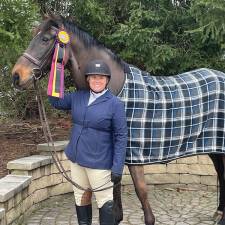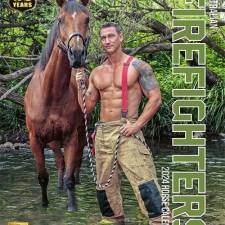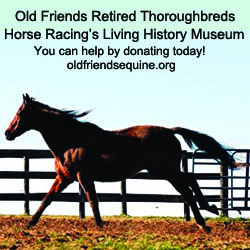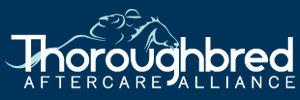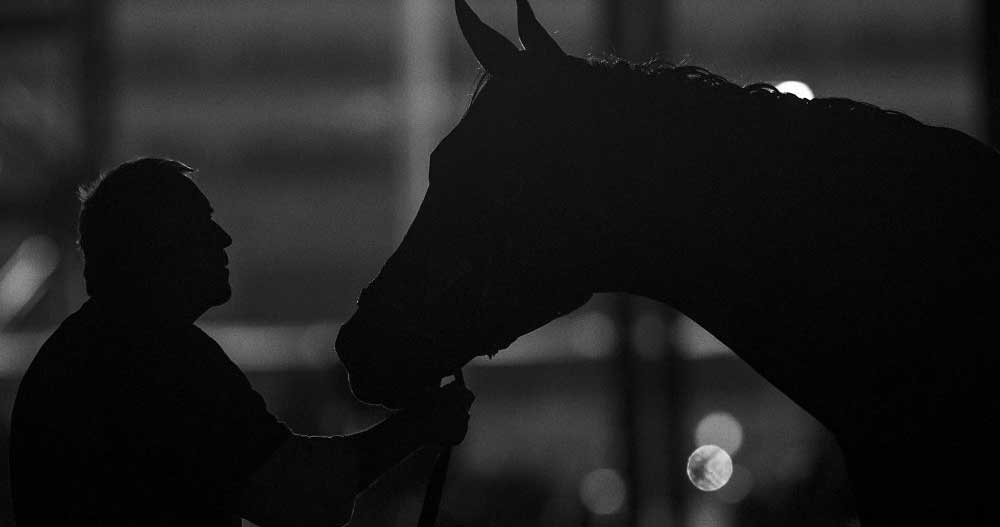
by Natalie Voss
Depending on the day, working in Thoroughbred aftercare can feel especially impactful or incredibly futile. On one hand, horse racing has accomplished so much in a short amount of time in its quest to take care of Thoroughbreds leaving the track. On the other, there's still a long way to go.
In the face of funding shortages, the complex legal, logistical, and ethical issues of the horse slaughter pipeline, and a mass influx of horses in need, what can the industry do better?
The intangible efforts
John Phillips, president of the Thoroughbred Aftercare Alliance (TAA), said the first step is to define the problem. For one thing, we need better data to understand how many Thoroughbreds find themselves in need, including the number in the slaughter pipeline.
“I think historically this is one of the areas that has provided reluctance,” he said. “In a sense you almost wanted to bury your head in the sand and say 'Gee, maybe we really don't want to ask that question.' However, the Australians, who really faced this as an issue of great public sensitivity before we did, approached it very intelligently. It became known as the 'first exit from racing.'”
The Australian industry defines its aftercare obligation as connecting the horse with its first owner after it leaves the track. (This obviously isn't intended to include middlemen who sell the horse to the slaughter pipeline within days or weeks.) For Phillips, it doesn't make sense for the sport to accept blame for an owner several years and several homes down the road from the track who makes the decision to neglect a horse or put it in a bad situation – particularly if those owners aren't part of the racing industry and therefore can't face sanctions from tracks or racing commissions.
“If we use the first exit philosophy, I believe the problem is manageable,” said Phillips.
Of course, Phillips acknowledges, there will be cases of non-licensed racing participants like breeders who may fail to provide adequate care for their stock. This is a much more complicated problem because that behavior isn't worthy of the sport but also can't trigger penalties by commissions or tracks.
“My primary mission is to protect racing,” he said. “My secondary mission, when I've got the racing component solved, will be that very issue. That is going to be another issue. It will never be perfect.”
For Jen Roytz, executive director of the Retired Racehorse Project, the language we use to describe the aftercare effort in racing is just as important as the logistical approach to the problem. Roytz often finds that non-racing equestrians have limited knowledge of the sport and frequently express that they “rescued” their OTTB – a phrase she hears sometimes from industry insiders, too.
“You hear a lot of people term aftercare in general as 'rescue' and we're doing our industry a disservice by using that kind of terminology at this point,” said Roytz. “We know how well cared-for these horses are, from the moment they're planned as a mating on paper. So using the term 'rescue' really sets us back, especially in the eyes of the layperson who is not involved intimately with the Thoroughbred industry and only has a very peripheral understanding of it. To hear that a horse has to be 'rescued' from our industry is not a good look for us.”
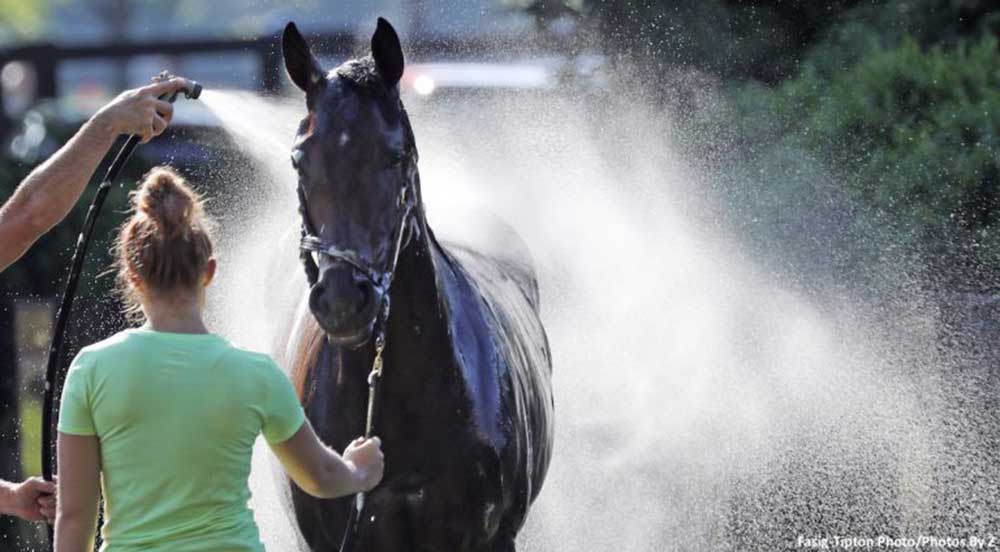
The tangible solutions
Those working on the front lines of aftercare say the greatest need continues to be increased funding. Every entity or individual, profit or non-profit, interviewed for this series acknowledged a waitlist for spaces in their OTTB program, whether for retraining and adoption or sanctuary. Several expressed frustration that many funding efforts are voluntary, not mandatory.
“They all can't go into a second career,” said Marlene Murray, president and co-founder of Retirement Assistance and Care for Equines (R.A.C.E.) Fund. “There are some horses who sustain injuries that are going to limit their ability to do that. Of course, there are horses who can be companion animals but those types of homes do not come up very often. The expense of the care of those horses is falling on organizations like ours. We're carrying the majority of expenses for those horses, which is not right.”
Indeed, it would seem that unless funding mechanisms become automatic and mandatory, only part of the industry is willing to write a check. When AmTote and The Stronach Group first announced the development of software that would allow horseplayers to voluntarily contribute part of their winnings to the TAA, gamblers expressed indignation at the thought of being offered the option to pay. Phillips acknowledged the percentage of buyers and sellers at public auction opting to donate a percentage of a horse's sale price was between 40 and 50 percent.
“I'd like it to be higher, but at least we're in that ballpark,” Phillips said.
When The Jockey Club introduced mandatory aftercare support fees to accompany reports of mares bred and foal registration, sources told the Paulick Report, the office fielded angry phone calls from a number of breeders. Some subsequently scaled back their voluntary donations.
The other way to lighten the financial burden on non-profit aftercare groups is to retire horses earlier. At a continuing education event for New York trainers in 2017, Dr. Patty Hogan warned participants against what she calls “One Last Race Syndrome.” Hogan described this as the tendency of trainers to see a problem brewing in a horse but feeling tempted to run the horse one more time, hoping for one last check before they have to retire. The problem with that, Hogan said, is that “last race” (or series of last races, if the trainer keeps chasing the check) is often where the horse suffers more damage. That last injury may be enough to seriously limit the horse's abilities in a second career, therefore limiting his prospects for adoption or sale.
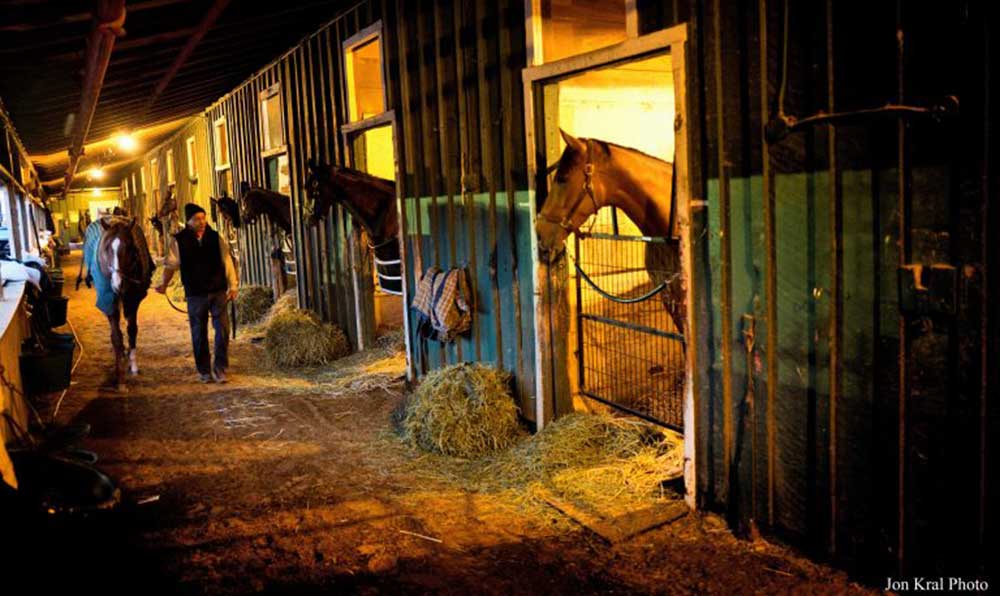
“I think we have the problem that probably a lot of other places do, which is 'Can you please just stop on them a race or two or three before you did?'” said Victoria Keith, president of the National Thoroughbred Welfare Organization, which specializes in Louisiana aftercare. “To me, I want to go down there and maybe have some seminars or something to show them it doesn't do any good to stick it in a $4,000 claimer and run up the track. You still have all the costs of training. One thing I learned from Rick [Porter of Fox Hill Farm] is your best loss is your first loss. Don't keep putting bad training money into a horse.”
Anna Ford, program director for New Vocations, said she encounters a lack of understanding by racing connections about the requirements for a horse to have a successful second career. Sometimes this translates to a misunderstanding about the horse's value, and sometimes trainers or veterinarians believe a riding stable will be happy to accept a horse regardless of its lingering issues.
“I think there is an unrealistic expectation that a horse that can't race will always be fine as a riding horse,” Ford said. “Equestrians, whether they're trail riding or competing in Grand Prix jumping, they all want a sound horse. They don't want a horse with arthritis and chronic issues.
“In all honesty when that vet is looking at that horse, a lot of those vets are not seeing what those injuries will look like eight months later,” she added. “So they don't really even know how quickly arthritis can form, how things do mend and how things don't mend. All they're seeing are the ones that are racing and maintaining. To say that horse will be fine 'as a riding horse,' we see plenty that then aren't. It's not the vet is intentionally lying, it's they really don't know what those things look like after some time.”
Put existing policies to work
When it comes to reducing the number of OTTBs in the slaughter pipeline, many in aftercare have the same frustration as our readers – they're not convinced tracks enforce the anti-slaughter policies in their stall applications. Racetracks seem to have varying definitions of what's required to deny a trainer stalls or entries based on a policy violation, and the language of some anti-slaughter policies requires the racetrack to prove the trainer in question knew a horse was bound for slaughter in order to act.
Many say they're hesitant to enforce without concrete proof because they don't want to end up in court – and that's not an unwarranted fear. In 2017, Tampa Bay Downs banned a trainer after one of his horses was found in a kill pen with a mutilated tattoo. The trainer took the track to court in a case that dragged on for two years before voluntarily dismissing the case in September of this year.
“You have tracks that do care and will do something about it and then you have tracks that won't do anything,” said Kelly Smith, founder of Omega Horse Rescue.
Smith said she frequently reports trainers, especially repeat offenders, to the tracks where they're based. She rarely receives a follow-up communication letting her know whether the claim was investigated or dropped.
Of course, she realizes that as long as horse slaughter is taking place in North America, there will be a market for traders and kill buyers. (Funding for the inspection of horse slaughterhouses was taken out of federal budgets in the U.S. years ago, ending the practice on a commercial scale, but it remains a regulated industry in Canada and Mexico.) As long as a meat buyer is willing to pay a trainer a few hundred dollars, there will be trainers who choose that option if it's easily accessible to them.
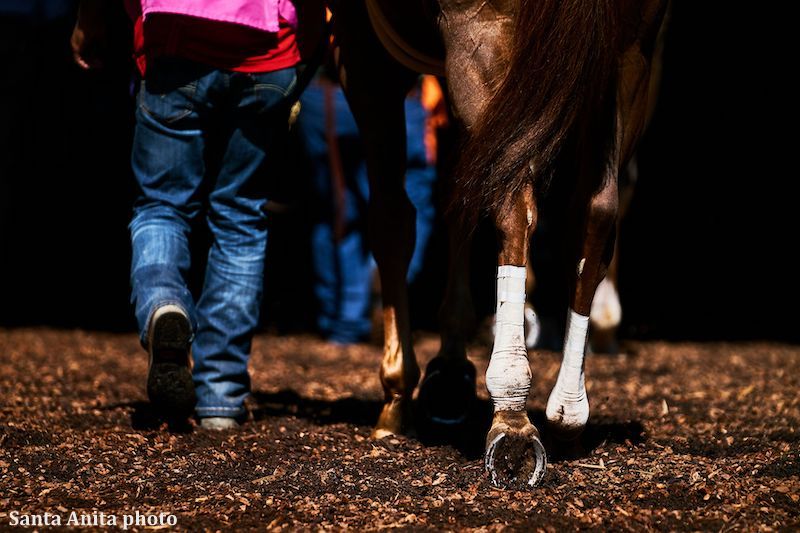
“I'm not in the judge's seat,” Smith said. “I'm someone who tries to clean up the mess. It seems to me the industry has made some strides but there are a lot of things that can be done to make it better. And one of those things, I'd think, would be free euthanasia for horses who are broke down or injured.
“I wish there was a way to get more of the smaller tracks offering the owners a little bit of money for each horse so they wouldn't have to go there.”
Perhaps surprisingly, one of the easiest ways to make entry into the pipeline more difficult would be to have restrictions about who can come and go on a racetrack's backstretch – and many tracks aren't doing that. Although health certificates and Coggins papers are required to ship in to most backstretches, tracks rarely check a horse's papers when it leaves, and security personnel almost never flip lips to see whether the horses in a trailer match their papers. This reduces track security's ability to notice if someone is entering a track each week with an empty trailer and hauling large numbers of horses off. It also means no one can establish when a horse left the property in relation to its subsequent discovery in a kill pen.
“That serves a bad purpose in two ways — one, that horse may be disappearing off the go to auction or a kill buyer,” said Keith. “The other thing I've heard about is that the horse may be going out the gate to get shockwave or other things and then come back the day of the race. So I find it incomprehensible that any track does not know every horse that goes in, and it's not logged every time it goes in and out. To me, it's unforgivable. I'm sure someone can manage to go look at the tattoo (or, coming soon, a microchip wand) and write down every horse that comes in and out of the gate.
“That doesn't cost a lot of money. You're already paying somebody to sit at the gate.”
Models that are already working
One potential solution to many problems – education, intervention, and aiding earlier retirements – seems to be on-track liaisons. Beyond The Wire in Maryland, Turning For Home at Parx, New Start at Penn National, Final Furlong at Assiniboia Downs, Second Call in New Jersey, and CARMA in California have all been designed to position one or more aftercare experts on backstretches, helping connect trainers with accredited aftercare facilities or trusted groups/individuals, fielding questions about retirement and retraining, or helping those trainers list horses for sale. CANTER does the same, focusing primarily on selling horses to private individuals and occasionally providing rehabilitation and adoption at a CANTER facility.
“Most of what I do is have conversations with trainers, to try to find out what their horses' issues are, if any, and try to find the best non-profit for them or direct them to CANTER for listings if the horse is totally sound,” said Rachel Masen, CARMA Aftercare Liaison at Golden Gate Fields.
Masen assists interested horsemen in gathering photos and appropriate paperwork to get their horses placed in the right program. CARMA operates as a funding arm for California nonprofits and also supports some horses coming off the track needing rehabilitation time before they're ready for adoption. Masen also handles intake for CARMA's Placement Program for Northern California OTTBs.
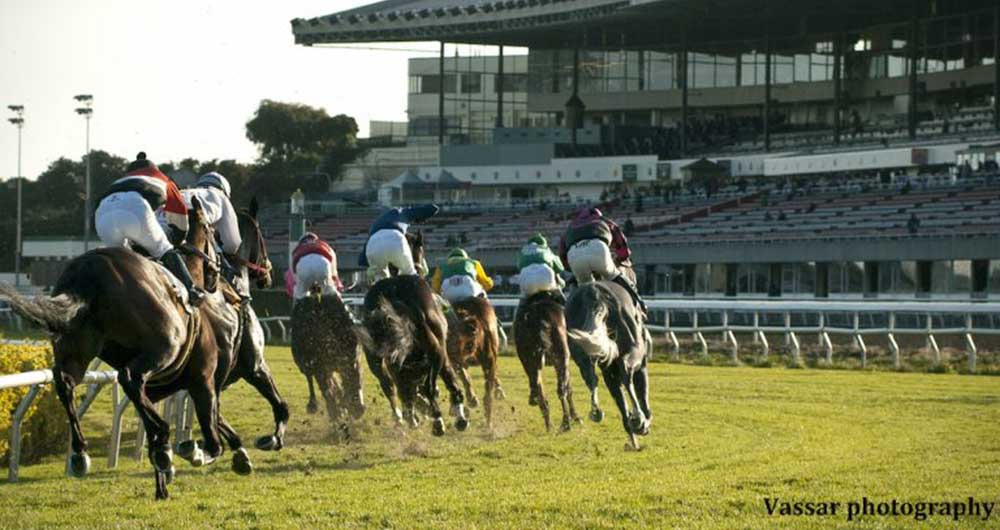
“There are some trainers and some owners that are very savvy; they know all their options,” she said. “They call me, they have the horse ready, the paperwork filled out and they know where the horse should go. But then there are other trainers that aren't necessarily as understanding or comfortable with the program, or maybe haven't used it before. There has been a lot more awareness in the majority of trainers over the past few years.
“I think it's extremely helpful for people to have somebody to call, and not have to go call 20 nonprofits and get shot down every time because they don't know how to go about getting what they need. Is that model going to work at every track? I don't know. I don't know if the community is the same everywhere, if the trainers are as willing to make changes. Golden Gate is a smaller track but a progressive one. They want the best for the horses.”
In Manitoba, Final Furlong Canada president April Keedian has a similar role, but she is primarily working to match Thoroughbreds with private riding homes. This year, Keedian said the demand for OTTBs at Winnipeg's Assiniboia Downs exceeded the supply for the first time since she launched the program a decade ago.
“We've been growing by leaps and bounds,” said Keedian. “It's almost difficult to keep up with all the work, but that's good.”
Final Furlong held a paddock sale toward the end of the meet at Assiniboia for the first time this year. Trainers paraded available horses in the paddock, and exercise riders rode some of them through for potential buyers. The track's announcer donated his time to read provided notes about each horse, and a veterinarian was on hand to do pre-purchase examinations for interested buyers. Keedian worked with trainers to ensure horses would be priced above meat price.
“On the backside, it was amazing – all the people who should have been going home early and having some time off stuck around and were ponying horses for us, and bringing them up to the paddock,” said Keedian. “Pretty much every horse but one, who was a more difficult sell, they were all sold.”
Keedian said the backstretch community is grateful to have a viable alternative to calling a meat buyer.
“Most of our trainers, they don't want them going there,” she said. “There's been a real shift in attitude on that. Not only do most of them care about the horses and want them to go to a home that will use them and look after them, but nowadays they also realize it's not good for the public perception.
“It's rarely a concern for us,” Keedian added. “We do have maybe one or two show up each year at local auctions and then Final Furlong fundraises for them. The trainers really, really appreciate us. The first or second year they were a little skeptical of us, but now they're so supportive.”
Final Furlong networks about 100 horses each year, some to hunter/jumpers and eventers but lots heading for pleasure and trail riding homes. In April, the group will host its first OTTB show, designed as an expo to show horses in various stages of retraining/second careers.
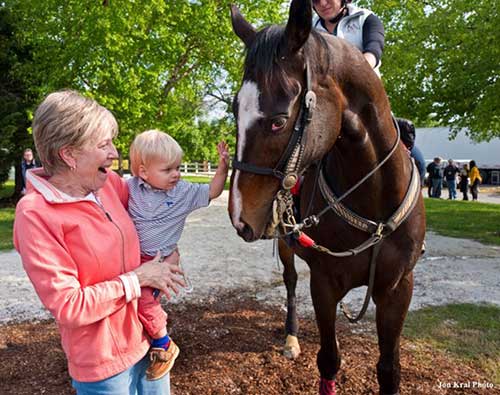
And that's the other piece of the puzzle that's working – those private individuals who want to buy OTTBs above meat price, put some time on them, and sell them even higher. As aftercare nonprofits have grown, so has the number of equestrians operating on a for-profit basis.
“Those same people may get horses from a nonprofit entity,” said Roytz. “We've seen a lot of that happening — people will adopt a horse for the Makeover and sell it a year or two later. That's still accomplishing the goal and supporting nonprofit work.
“I think that's something a lot of people miss.”
So where do we go from here?
Considering the depths of the challenges surrounding aftercare, it's hard to imagine what else we can do as a sport to improve.
Luckily, the average Thoroughbred touches a lot of people from its conception to its retirement from racing. Every one of them can do something to positively impact that horse's future.
Those in the world of nonprofit and for-profit Thoroughbred aftercare will tell you the solution, in principle, is simple: Put the horse first, even when it's not convenient for you. Send the donation, have the aftercare plan, retire the horse early, change your organization's policies to keep the horse's future a bright one.
Consider it payback. After all, without Thoroughbreds, none of us would be where we are today.
This article originally appeared on The Paulick Report and is published here with permission.
Find out more relevant articles in our section on Retire & Rehome .







